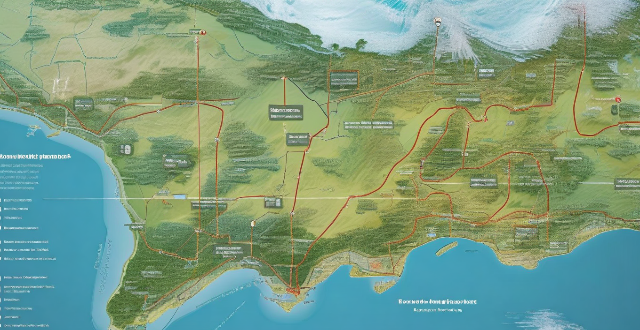Climate change significantly impacts the priorities in environmental monitoring by necessitating a focus on rising sea levels, extreme weather events, changes in biodiversity, impacts on agriculture and food security, and air quality issues. Addressing these challenges requires a comprehensive approach that incorporates regular monitoring, early warning systems, adaptation strategies, and effective conservation planning.

Impact of Climate Change on Environmental Monitoring Priorities
Climate change has become a pressing global issue that affects various aspects of the environment. As such, it necessitates a shift in priorities for environmental monitoring. The following are some ways in which climate change impacts the priorities in environmental monitoring:
1. Rising Sea Levels
- Coastal Erosion and Habitat Loss: Rising sea levels lead to increased coastal erosion, loss of habitats, and alterations in ecosystem dynamics. This requires regular monitoring of coastal areas to assess the impact on biodiversity and implement appropriate conservation measures.
- Saltwater Intrusion: Higher sea levels can cause saltwater intrusion into freshwater sources, affecting water quality and availability. Monitoring programs must prioritize the assessment of groundwater quality and quantity to mitigate potential risks.
2. Extreme Weather Events
- Floods and Landslides: More frequent and intense rainfall events can lead to floods and landslides, causing soil erosion and degradation of water quality. Environmental monitoring should focus on assessing the vulnerability of regions to these events and implementing early warning systems.
- Droughts and Wildfires: Prolonged periods of drought can increase the risk of wildfires, leading to significant damage to ecosystems and air quality issues. Monitoring efforts should prioritize fire risk assessment and management strategies to minimize ecological impacts.
3. Changes in Biodiversity
- Shifts in Species Ranges: Climate change can cause species to move towards cooler regions, leading to changes in community composition and potential invasions by non-native species. Monitoring programs should track these shifts to inform conservation planning and management decisions.
- Loss of Ecosystem Services: Changes in biodiversity can result in reduced ecosystem services, such as pollination, nutrient cycling, and carbon sequestration. Environmental monitoring should prioritize assessing the impact on these services to develop effective conservation strategies.
4. Impacts on Agriculture and Food Security
- Crop Yield Variability: Changes in temperature and precipitation patterns can affect crop yields, posing challenges for food security. Monitoring efforts should focus on assessing the resilience of agricultural systems and developing adaptation strategies.
- Pest and Disease Outbreaks: Warmer temperatures can facilitate the spread of pests and diseases, further impacting agricultural productivity. Environmental monitoring should prioritize surveillance for these outbreaks to prevent significant economic losses.
5. Air Quality Issues
- Increased Pollutant Concentrations: Higher temperatures can lead to increased concentrations of air pollutants, exacerbating respiratory health issues. Monitoring programs should prioritize assessing air quality trends and implementing pollution reduction strategies.
- Ozone Depletion: Climate change can also affect stratospheric ozone levels, leading to increased UV radiation exposure. Environmental monitoring should include tracking ozone layer recovery and implementing measures to protect human health and ecosystems from excessive UV radiation.
In conclusion, climate change significantly impacts the priorities in environmental monitoring by necessitating a focus on rising sea levels, extreme weather events, changes in biodiversity, impacts on agriculture and food security, and air quality issues. Addressing these challenges requires a comprehensive approach that incorporates regular monitoring, early warning systems, adaptation strategies, and effective conservation planning.